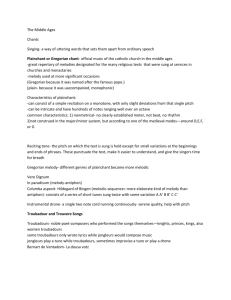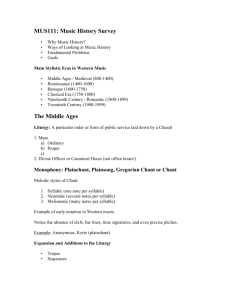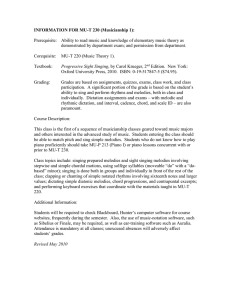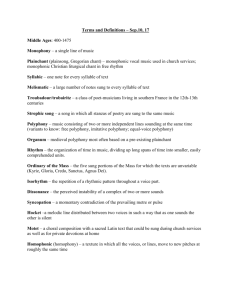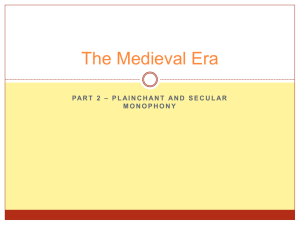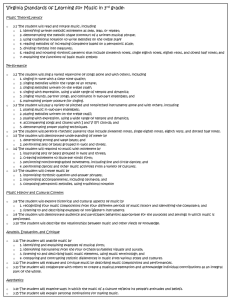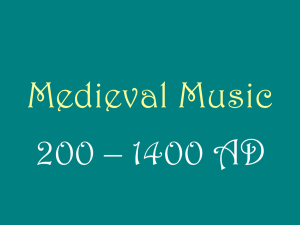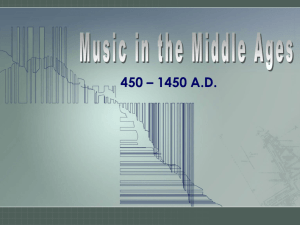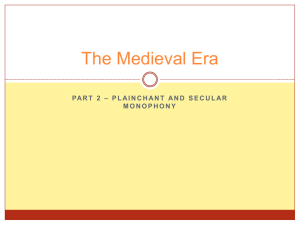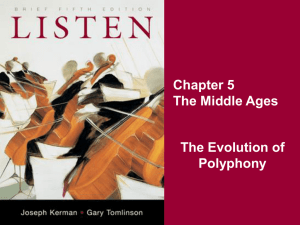Plainchant or Gregorian Chant
advertisement
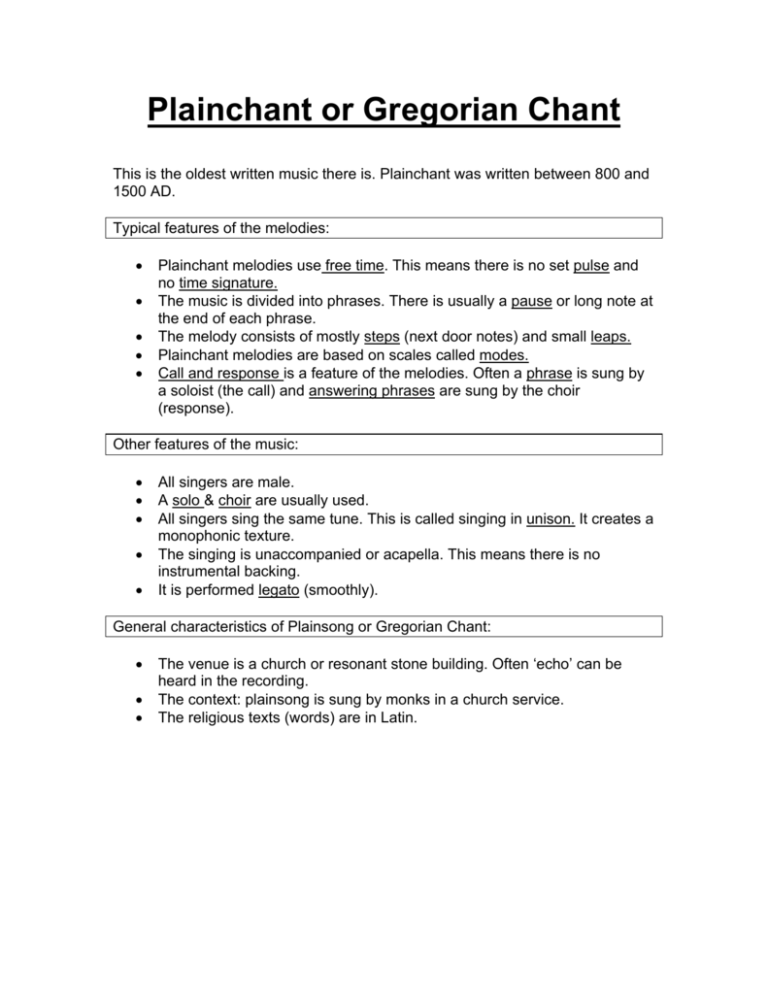
Plainchant or Gregorian Chant This is the oldest written music there is. Plainchant was written between 800 and 1500 AD. Typical features of the melodies: • • • • • Plainchant melodies use free time. This means there is no set pulse and no time signature. The music is divided into phrases. There is usually a pause or long note at the end of each phrase. The melody consists of mostly steps (next door notes) and small leaps. Plainchant melodies are based on scales called modes. Call and response is a feature of the melodies. Often a phrase is sung by a soloist (the call) and answering phrases are sung by the choir (response). Other features of the music: • • • • • All singers are male. A solo & choir are usually used. All singers sing the same tune. This is called singing in unison. It creates a monophonic texture. The singing is unaccompanied or acapella. This means there is no instrumental backing. It is performed legato (smoothly). General characteristics of Plainsong or Gregorian Chant: • • • The venue is a church or resonant stone building. Often ‘echo’ can be heard in the recording. The context: plainsong is sung by monks in a church service. The religious texts (words) are in Latin.
